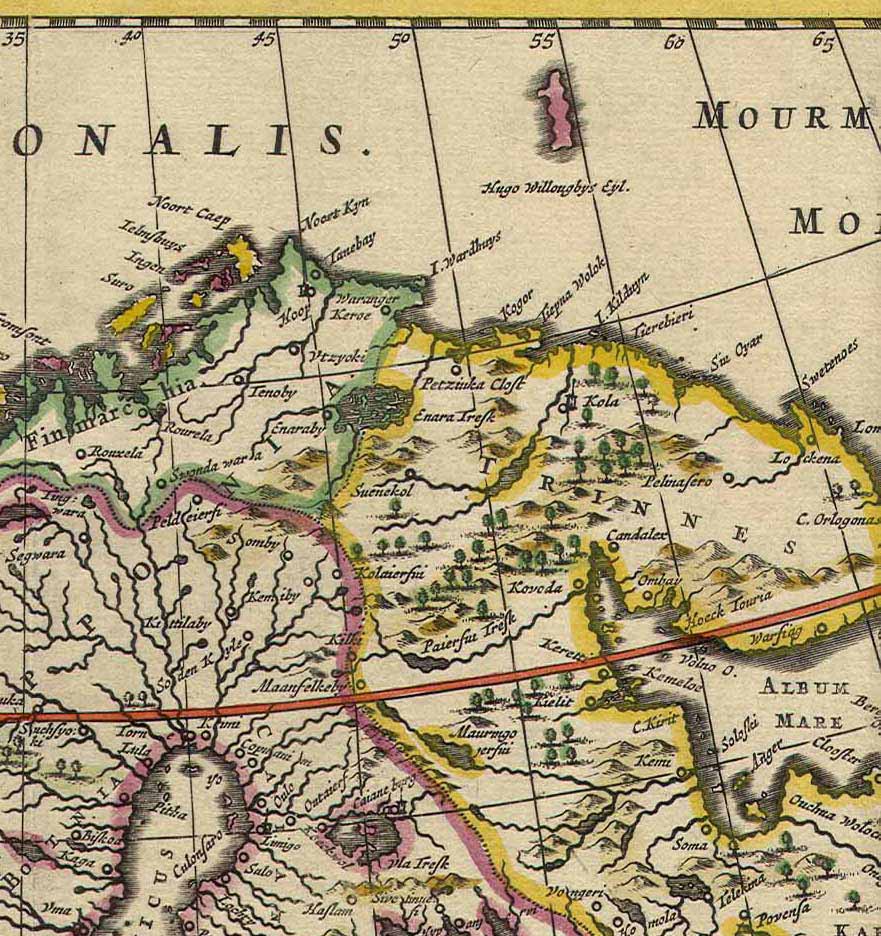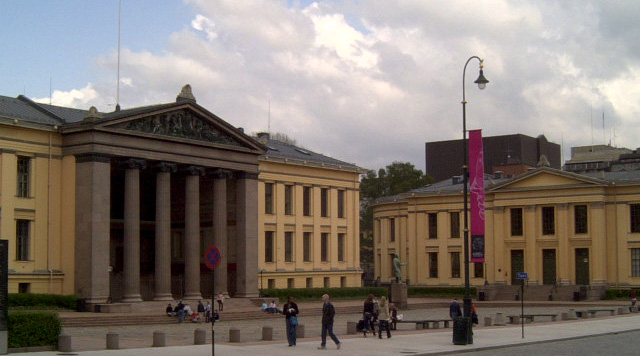|
Rolf Danielsen
Rolf Danielsen (19 October 1922 – 25 April 2002) was a Norwegian educator, author and historian. He was born in Hammerfest in Finnmark, Norway. He was awarded his cand.philol. from the University of Oslo (1950). Danielsen subsequently worked at the University of Oslo (1950-1951) and University of Gothenburg (1963-1964). He was a professor of modern history at the University of Bergen from 1968 to 1991. His thesis was a study on the Parliament of Norway (). He has written volume four of the History of Trondheim. He was a board member of The Research Council of Norway ''The'' is a grammatical article in English, denoting nouns that are already or about to be mentioned, under discussion, implied or otherwise presumed familiar to listeners, readers, or speakers. It is the definite article in English. ''The ... (''Norges almenvitenskapelige forskningsråd'') from 1973 to 1975. References 1922 births 2002 deaths People from Hammerfest University of Oslo alumni ... [...More Info...] [...Related Items...] OR: [Wikipedia] [Google] [Baidu] |
Hammerfest
Hammerfest or Hámmárfeasta is a town/cityIn the Norwegian language, the word ''by'' can be translated as "town" or "city". that is also the administrative centre of Hammerfest Municipality in Finnmark county, Norway. It is located on the northwestern coast of the island of Kvaløya, just north of the village of Rypefjord and southwest of the village of Forsøl. The town has a population (2023) of 7,882 which gives the city a population density of . The town has an ice-free harbour, including the nearby island of Melkøya which is home to a natural gas processing station. It processes gas from the Snøhvit gas field in the Barents Sea. Rypefjord is a suburb to the south of the city. The main church for the city and municipality is Hammerfest Church. The "midnight sun" is above the horizon from 15 May to 31 July, and the period with continuous daylight lasts a bit longer. Polar night, on the other hand, lasts from 23 November to 19 January. The town is visited by cruise ... [...More Info...] [...Related Items...] OR: [Wikipedia] [Google] [Baidu] |
Finnmark
Finnmark (; ; ; ; ) is a counties of Norway, county in northern Norway. By land, it borders Troms county to the west, Finland's Lapland (Finland), Lapland region to the south, and Russia's Murmansk Oblast to the east, and by water, the Norwegian Sea (Atlantic Ocean) to the northwest, and the Barents Sea (Arctic Ocean) to the north and northeast. The county was formerly known as ''Finmarkens amt'' or ''Vardøhus amt''. Since 2002, it has had two official names: Finnmark (Norwegian language, Norwegian) and Finnmárku (Northern Sami language, Northern Sami). It is part of the Sápmi region, which spans four countries, as well as the Barents Region, and is Norway's second-largest and least populous county. Situated at the northernmost part of continental Europe, where the Norwegian coastline swings eastward, Finnmark is an area "where East meets West" in culture as well as in nature and geography. Vardø Municipality, Norway's easternmost municipality, is farther east than Saint ... [...More Info...] [...Related Items...] OR: [Wikipedia] [Google] [Baidu] |
University Of Oslo
The University of Oslo (; ) is a public university, public research university located in Oslo, Norway. It is the List of oldest universities in continuous operation#Europe, oldest university in Norway. Originally named the Royal Frederick University, the university was established in 1811 as the de facto Norwegian continuation of Denmark-Norway's common university, the University of Copenhagen, with which it shares many traditions. It was named for King Frederick VI of Denmark and Norway, and received its current name in 1939. The university was commonly nicknamed "The Royal Frederick's" (''Det Kgl. Frederiks'') before the name change, and informally also referred to simply as ''Universitetet'' (). The university was the only university in Norway until the University of Bergen was founded in 1946. It has approximately 27,700 students and employs around 6,000 people. Its faculties include (Lutheranism, Lutheran) theology (with the Lutheran Church of Norway having been Norway's ... [...More Info...] [...Related Items...] OR: [Wikipedia] [Google] [Baidu] |
University Of Gothenburg
The University of Gothenburg () is a List of universities in Sweden, university in Sweden's second largest city, Gothenburg. Founded in 1891, the university is the third-oldest of the current List of universities in Sweden#Public universities, Swedish universities and, with 53,624 students and 6,707 staff members, it is one of the largest universities in the Nordic countries. About With its eight faculties and 38 departments, the University of Gothenburg is one of the most wide-ranging and versatile universities in Sweden. Its eight faculties offer training in the Creative Arts, Social Sciences, Natural Sciences, Humanities, Education, Information Technology, Business, Economics and Law, and Health Sciences. The University of Gothenburg has the highest number of applicants per study place in many of its subjects and courses, making it one of the most popular universities in Sweden. History The University of Gothenburg was founded as ''Göteborgs högskola'' (Gothenburg Uni ... [...More Info...] [...Related Items...] OR: [Wikipedia] [Google] [Baidu] |
University Of Bergen
The University of Bergen () is a public university, public research university in Bergen, Norway. As of 2021, the university had over 4,000 employees and 19,000 students. It was established by an act of parliament in 1946 consolidating several scientific institutions that dated as far back as 1825. It is Norway's second-oldest university, and is considered to be one of the nation’s four so-called "established universities." It has faculties and programmes in all the academic fields typical of a classical university, as well as such degree programmes as medicine and law that, traditionally, only the “established universities” are authorized by law to offer. It is also one of Norway's leading universities in many of the natural sciences, including marine research and climate research. It has consistently been ranked in the top 200 or top one percent of universities in the world, and as one of the best 10 or best 50 universities worldwide in some fields, such as Earth science, e ... [...More Info...] [...Related Items...] OR: [Wikipedia] [Google] [Baidu] |
Store Norske Leksikon
The ''Great Norwegian Encyclopedia'' (, abbreviated ''SNL'') is a Norwegian-language online encyclopedia. It has several subdivisions, including the Norsk biografisk leksikon. The online encyclopedia is among the most-read Norwegian published sites, with up to 3.5 million unique visitors per month. Paper editions (1978–2007) The ''SNL'' was created in 1978, when the two publishing houses Aschehoug and Gyldendal merged their encyclopedias and created the company Kunnskapsforlaget. Up until 1978 the two publishing houses of Aschehoug and Gyldendal, Norway's two largest, had published ' and ', respectively. The respective first editions were published in 1906–1913 (Aschehoug) and 1933–1934 (Gyldendal). The slump in sales of paper-based encyclopedias around the turn of the 21st century hit Kunnskapsforlaget hard, but a fourth edition of the paper encyclopedia was secured by a grant of ten million Norwegian kroner from the foundation Fritt Ord in 2003. The f ... [...More Info...] [...Related Items...] OR: [Wikipedia] [Google] [Baidu] |
Parliament Of Norway
The Storting ( ; ) is the supreme legislature of Norway, established in 1814 by the Constitution of Norway. It is located in Oslo. The unicameral parliament has 169 members and is elected every four years based on party-list proportional representation in nineteen multi-seat constituencies. A member of the Storting is known in Norwegian as a ''stortingsrepresentant'', literally "Storting representative". The assembly is led by a president and, since 2009, five vice presidents: the presidium. The members are allocated to twelve standing committees as well as four procedural committees. Three ombudsmen are directly subordinate to parliament: the Parliamentary Intelligence Oversight Committee and the Office of the Auditor General. Parliamentarianism was established in 1884, with the Storting operating a form of "qualified unicameralism", in which it divided its membership into two internal chambers making Norway a de facto bicameral parliament, the Lagting and the Odelsting ... [...More Info...] [...Related Items...] OR: [Wikipedia] [Google] [Baidu] |
Trondheim
Trondheim ( , , ; ), historically Kaupangen, Nidaros, and Trondhjem (), is a city and municipality in Trøndelag county, Norway. As of 2022, it had a population of 212,660. Trondheim is the third most populous municipality in Norway, and is the fourth largest urban area. Trondheim lies on the south shore of Trondheim Fjord at the mouth of the River Nidelva. Among the significant technology-oriented institutions headquartered in Trondheim are the Norwegian University of Science and Technology (NTNU), the Foundation for Scientific and Industrial Research (SINTEF), the Geological Survey of Norway (NGU), and St. Olavs University Hospital. The settlement was founded in 997 as a trading post and served as the capital of Norway from the Viking Age until 1217. From 1152 to 1537, the city was the seat of the Catholic Archdiocese of Nidaros; it then became, and has remained, the seat of the Lutheran Diocese of Nidaros and the site of the Nidaros Cathedral. It was incorporated ... [...More Info...] [...Related Items...] OR: [Wikipedia] [Google] [Baidu] |
The Research Council Of Norway
''The'' is a grammatical article in English, denoting nouns that are already or about to be mentioned, under discussion, implied or otherwise presumed familiar to listeners, readers, or speakers. It is the definite article in English. ''The'' is the most frequently used word in the English language; studies and analyses of texts have found it to account for seven percent of all printed English-language words. It is derived from gendered articles in Old English which combined in Middle English and now has a single form used with nouns of any gender. The word can be used with both singular and plural nouns, and with a noun that starts with any letter. This is different from many other languages, which have different forms of the definite article for different genders or numbers. Pronunciation In most dialects, "the" is pronounced as (with the voiced dental fricative followed by a schwa) when followed by a consonant sound, and as (homophone of the archaic pronoun ''thee' ... [...More Info...] [...Related Items...] OR: [Wikipedia] [Google] [Baidu] |
Norsk Biografisk Leksikon
is the largest Norwegian biographical encyclopedia. It is part of the '' Great Norwegian Encyclopedia''. Origin The first print edition (NBL1) was issued between 1923 and 1983; it included 19 volumes and 5,100 articles. Kunnskapsforlaget took over the rights to NBL1 from Aschehoug in 1995, and work began on a second print edition (NBL2) in 1998. The project had economic support from the Fritt Ord Foundation and the Ministry of Culture, and NBL2 was launched in the years 1999–2005, including 10 volumes and around 5,700 articles. Online access In 2009 an Internet The Internet (or internet) is the Global network, global system of interconnected computer networks that uses the Internet protocol suite (TCP/IP) to communicate between networks and devices. It is a internetworking, network of networks ... edition, with free access, was released by together with the general-purpose . The electronic edition features additional biographies, and updates about dates of ... [...More Info...] [...Related Items...] OR: [Wikipedia] [Google] [Baidu] |
1922 Births
Events January * January 7 – Dáil Éireann (Irish Republic), Dáil Éireann, the parliament of the Irish Republic, ratifies the Anglo-Irish Treaty by 64–57 votes. * January 10 – Arthur Griffith is elected President of Dáil Éireann, the day after Éamon de Valera resigns. * January 11 – The first successful insulin treatment of diabetes is made, by Frederick Banting in Toronto. * January 15 – Michael Collins (Irish leader), Michael Collins becomes Chairman of the Provisional Government of the Irish Free State. * January 26 – Italian forces occupy Misrata, Italian Libya, Libya; the Pacification of Libya, reconquest of Libya begins. February * February 6 ** Pope Pius XI (Achille Ratti) succeeds Pope Benedict XV, to become the 259th pope. ** The Washington Naval Treaty, Five Power Naval Disarmament Treaty is signed between the United States, United Kingdom, Empire of Japan, Japan, French Third Republic, France and Kingdom of Italy, Italy. Japan returns some ... [...More Info...] [...Related Items...] OR: [Wikipedia] [Google] [Baidu] |




